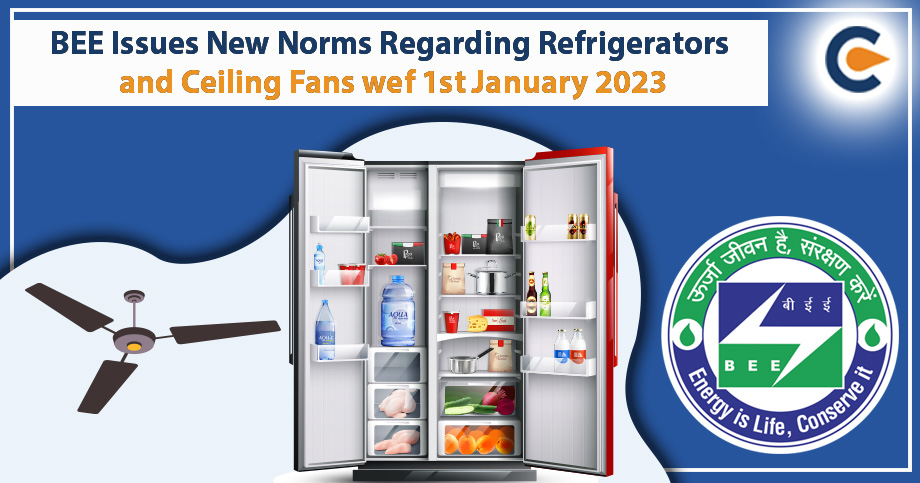Legal Framework governing Energy Efficiency
The Energy Efficiency is governed by following Acts/Rules:
- Energy Conservation Act of 2001[1];
- The Nodal Central Agency In the form of Bureau of Energy Efficiency;
- State Level Agencies created for the implementation of the Act.
What is the role of Energy Conservation Act?
- The Bureau of Energy Efficiency and Central Government has been empowered by the Act to specify the Energy Efficiency Standards;
- The Act prohibits the manufacture or supply or sale of any articles which do not meet the standards of Energy Efficiency;
- The act specifies that the Energy efficiency performance level shall be displayed on equipment and appliances.
What is the role of the Bureau of Energy efficiency?
- The Bureau has been established in the year 2002, under the Energy Conservation Act of 2001,
- Implementation of the following for improving the energy efficiency through various regulatory and promotional instruments:
- Planning, managing and implementing the provisions of the Energy Conservation Act,
- Appliance/Equipment standards and labeling,
- Following benchmark for industrial energy,
- Energy preservation building codes,
- Monitoring the energy use in high consumption units,
- Certification and accreditation of energy managers and auditors,
- Providing direction to National Energy Consumption activities through the manner of Policy framework
- Dissemination of information and accurate knowledge for facilitating and demonstrating pilot projects
Institutional Framework for Regulating Energy Efficiency
Bureau of Indian Standards (BIS)
BIS is a national standards body responsible for formulation and implementation of National Standards. The role of BIS includes production certification, quality system certification and EMS certification among others.
Bureau of Energy Efficiency (BEE)
As already stated BEE has been established for the implementation and monitoring of Energy Conservation Act, 2001. And one of the key areas of the Energy Conservation Act is Standards and Labeling. It also includes formulation of Energy Efficiency Standards.
Other institution under the framework includes the following:
- Laboratories under National Accreditation Board of laboratories;
- Educational Institutions;
- Manufacturers and their associations;
- Consumer Welfare Organizations;
- Ministries and Key Personnel.
Mission of Standards and Labeling Program
The purpose for which the Energy Standards and Labeling Program is established is based upon the following motives:
- Reduction of Overall Energy Consumption by bringing in use of Energy efficiency Equipment/appliances;
- Targeting an avoided capacity addition of over 3000 MW under the 5 year plan of Government of India.
Methodology followed for Energy Standards and Labeling
The wholesome process of Energy Standards and Labeling is done through the manner of following steps:
Step 1: Deciding if it is necessary to implement the Energy Standards. If yes, then how to attain it
- The potential benefits of the Standards by qualifying their monetary and environmental benefits shall be addressed on priority basis.
- Dissemination of the products on the basis of the priority shall be second thing in line to be taken care of.
- The data collected over the period of time shall be assessed based upon the needs and requirements.
- Continuously updating as per the test procedures and testing facilities adopted in other countries.
Step 2: Development of testing capabilities
- A standard testing facility shall be employed to evaluate all manufacturer’ products in the similar manner.
- Test procedures and process shall assure compliance with the testing requirements.
Step 3: Designing a labeling Program
The Energy label is the most important aspect of this program from the consumer’ perspective. Label design is an important element which can be established through proper consumer research and study.
Step 4: Implementing a labeling program and setting standards
The standard shall be set in order to:
- Eradicate the inefficient models existing in the market;
- Dismissal of the imports of inefficient products;
- Development of more economically efficient product by encouraging the local manufacturers.
Various types of technical and market analysis shall be conducted in order to ensure that the standard achieve its targets and purpose for which it has been established.
Step 5: Designing and implementation of a Communication Campaign
A communication Campaign capable of supporting the acceptance and use of new standards and labels shall be in place. This campaign shall be well versed with correct and accurate information and shall target the right audience at the right point of time.
Step 6: Ensuring the integrity of the program
Once the program is initiated, a verification task shall be conducted in order to determine the energy efficiency performance of the product. This is done in order to ensure the integrity of the program in place.
Step 7: Evaluation of the program
In order to run the program over a long period of time, the program’ performance shall be monitored by the Government from time to time in order to gather correct information so that the program can be adapted to ever changing scenarios and circumstances and to clearly demonstrate to the public in general that the actual benefits of the program is being achieved. A good program shall be revised and updated from time to time. This cycle of review and implementation can range from 2 to 12 years.













